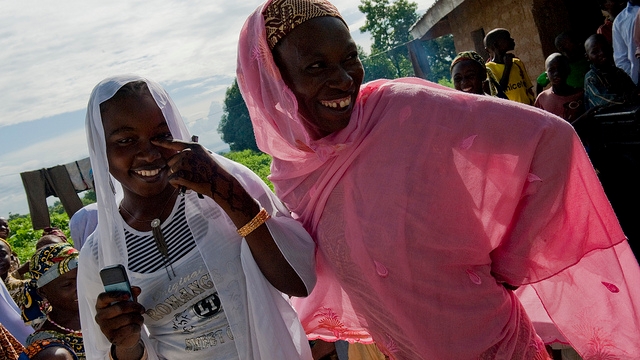Support to community-driven development (CDD) is as much about facilitating the flow of information among all groups in a community as it is about facilitating the flow of funds. Well designed information, education and communication (IEC) strategies can help alleviate the information asymmetry between stakeholders. Lack of information is often the most significant limitation on a community-based organization’s (CBOs) capacity to play a part in the development enterprise. Communications strategies are critical to enhancing project effectiveness and for ensuring transparency and accountability in all aspects of the program. A variety of media may be used to facilitate access to information, ranging from posters and illustrated guides to newspapers, role-plays and community radio. Communication acts as a powerful instrument for mobilizing communities and equipping them with the information, knowledge and capacity needed for them to actively participate in the development process, thus leading to behavioral change. It establishes clearly in the minds of the stakeholders their respective roles and responsibilities. In the context of CDD-type projects particularly, communication plays a key role in community empowerment. It gives voice to the poor and vulnerable, who otherwise are denied the opportunity to be heard.
Communication strategies thus aim to:
- Increase effectiveness of programs and sub-project process management
- Promote education, learning, and behavior change related to sectoral subject areas
- Foster relationships of trust between stakeholders
- Build capacity for development planning
Lessons Learned from CDD Design & Implementation:
- IEC campaign should be conceptualized at the design stage and precede project implementation.
- Communities should be well informed about the program content, conditions, and their roles and responsibilities. Mass communication campaigns that provide wide public dissemination of this material helps to place control in the hands of communities, thereby mitigating risks of manipulation by politicians, government officials, contracting agencies, and local elites.
- IEC campaigns should use simple and innovative means that are best suited to the culture and context of the community in order to be effective.
- An essential component of any CDD program should be to provide community members with knowledge and information that serve to facilitate linkages between community groups and both government and markets, and allow them to learn from experiences of other CBOs. CBOs also require technical information and support, including accounting and managerial skills for decision making and implementation of activities.
- It is important to have committed IEC professionals in the project management unit and training in communications needs to be provided to front line staff who work with communities.
- It is important to ensure that communications is an ongoing process that not just provides information, but builds accountability and transparency.
